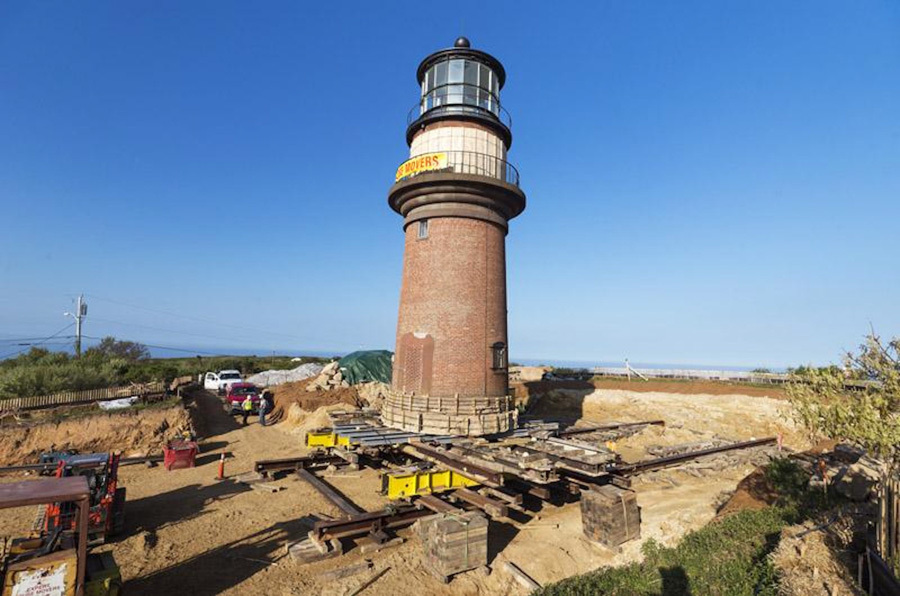Moving the Gay Head Light

Moving the Gay Head Light
Building lighthouses on the tops of high cliffs makes them visible, but also vulnerable. Storm waves regularly wash against the bases of the cliffs that line the northern shore of the Island, undercutting them and causing the cliff faces and the land above to slump onto the beach. Each of the four Island lighthouses built on a headland has been relocated at least once. Cape Poge, the most-often moved, has been shifted at least four times and possibly more, the last time (in 1987) by helicopter.
The brick tower of the current Gay Head Light was built in 1856. By the early twenty-first century, 150 years later, erosion had left it dangerously close to the edge of the cliffs. In June 2015, the lighthouse was relocated 129 feet further inland: an exacting process that involved adding temporary reinforcements to the brick tower, constructing a platform of steel beams beneath it, and laying a set of rails to the reinforced concrete pad at the new location. Inched along the rails by pneumatic pistons, the tower was lowered carefully into place on its new foundation, which was covered in dirt and plants saved from the original site.
Now 180 feet from the cliff face, the lighthouse is projected to be safe for another 150 years.
DETAILS
| Artist | Tim Johnson |
|---|---|
| Title | Moving the Gay Head Light |
| Date | 2015 |
| Type | Photograph |
| Credit | Gift of the Vineyard Gazette |
| Thematic Collection | 100 Years, 100 Stories: Building on Sand |
